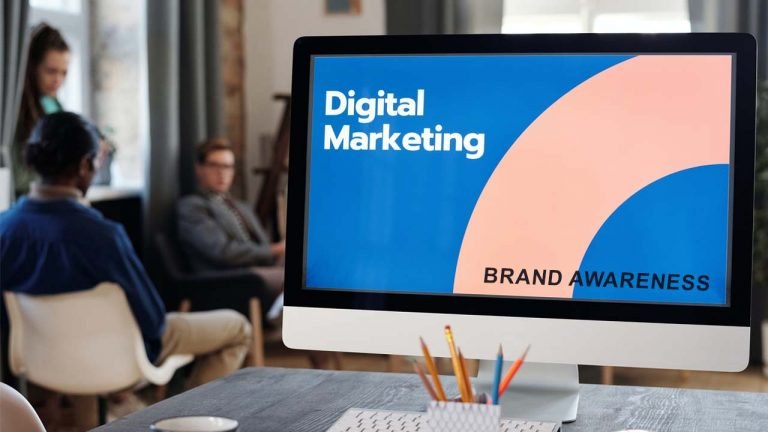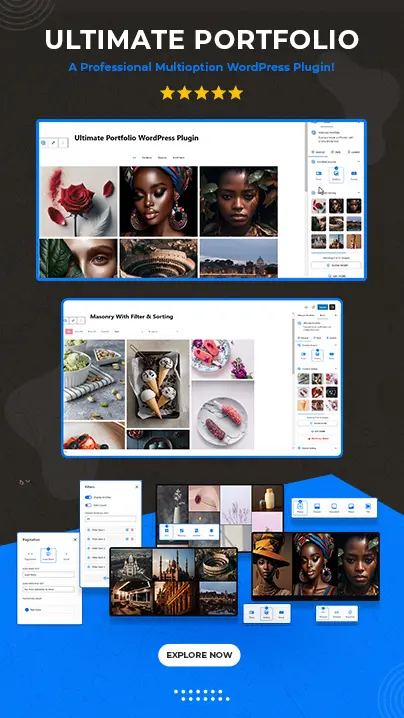
For non-branded searches, traditional SEO tactics are beneficial, but they are ineffective for branded queries. By accepting brand awareness as the fifth SEO pillar, you can learn how to expand branded search.
A marketing strategy called search engine optimization (SEO) aims to boost a website’s natural search engine traffic. Keyword and content, technical SEO, on-site SEO, and off-site SEO are the four main approaches that make up this process.
The four pillars of SEO are generally seen as being these four areas. Together, they support a website’s search engine optimization. Even if these four pillars are vast, brand recognition is still necessary for a successful SEO strategy. This article will explain why SEO marketers should consider brand awareness as the fifth SEO pillar.
The Basic Four Elements Of SEO
Let’s study the first four SEO pillars before we examine the fifth one:
Content and Keywords
Content is the king, and the cornerstone of search are keywords. The foundation of an SEO plan is a solid piece of content that has been optimized for keywords.
SEO techniques
If the website hosting doesn’t have a solid technical foundation, even great content won’t cut it. Technical SEO addresses issues with the website’s performance and indexability. It guarantees that a website’s pages load quickly and that search engines can easily crawl the material. Additionally, Google has created a collection of measures called Core Web Vitals to gauge the technical efficiency and usability of a web page.
SEO on-site
By improving the website’s structure and its pages, this pillar aids in search engines comprehending the content of the page. The techniques used to design a website and page structure that is simple for search engine crawlers and users to grasp include site navigation hierarchy, schema markup, page names, meta descriptions, heading tags, and picture alt text. Technical SEO addresses issues with the website’s performance and indexability.
SEO off-site
The beginning goes beyond having excellent content and a fantastic website. If a website doesn’t have authority or build trust in its subject area, search engines won’t give it high rankings. The quantity and quality of backlinks are considered by Google as early indicators when determining the authority of a website. Even while these four areas seem to cover a lot of ground in developing a search-optimized website, they can only contribute to a small portion of the traffic that comes from non-branded searches.
Branded vs. Non-Branded Searches
How do non-branded searches differ from branded searches, and what are they?
In-Brand Searches
In the search keywords, they use brand names. The search term “apple” is a branded term if you’re Apple Inc. Yes, Google is aware that you are seeking for the business that Steve Jobs and Steve Wozniak started rather than a specific fruit. Additionally, the phrases “iPhone,” “iPad,” and “MacBook” are trademarked. People who are looking for information, particularly regarding your brand or products, conduct branded searches.
Non-branded Searches
Non-branded queries, on the other hand, don’t include any brand names in the search phrases. Again, “laptop,” “smartphone,” and “tablet” are unbranded names that refer to devices made by Apple Inc. Non-branded queries come from those who may not be familiar with your company or your goods but are interested in learning more about the kinds of goods or services you provide.
Given this, one could assume that for a brand as powerful as Apple, the majority of their search traffic comes from branded queries. You would be mostly accurate, too. Semrush claims that branded searches account for more than half of the search traffic to Apple’s website.
What is the significance of branded search?
In addition to reflecting the level of interest in a particular brand, branded search traffic has a higher level of commercial intent and a higher conversion rate. In general, non-branded search traffic feeds the top of the marketing funnel whereas branded search traffic feeds the bottom. For a brand to continue to operate in a healthy and expanding manner, both forms of traffic must increase.

Despite this, most companies lack Apple’s level of brand recognition. What can marketers do to increase the amount of branded search traffic going to a website?
Different Traffic Drivers For Branded And Non-Branded Searches
The formula below shows how clickthrough rate (CTR) on the search engine results page and the volume of keyword searches affect search traffic (SERP). A website with a high clickthrough rate and aggregated keyword search volume will experience high search traffic.
[Search traffic = Keyword search volume * Clickthrough rate]
Wait a second! What role does keyword ranking have in this scenario?
In actuality, a key element in determining the clickthrough rate is keyword ranking. The clickthrough rate increases as your keywords rise in the search engine results. As per Advanced Web Ranking, the CTR for the top spot on Google might be as high as 38%. After position #5, CTR is maintained at 1% or less and decreases to about 5%.
In light of this, how do the four SEO pillars affect a website’s search traffic?
In two ways, they assist a website in gaining more search traffic:
- Increasing the aggregate keyword search volume through targeted keyword research.
- Enhancing keyword rankings to increase SERP clickthrough rate using technical SEO, valuable content that is keyword-optimized, and on-site and off-site optimization.
However, the issue is that these SEO strategies primarily only produce results for unbranded searches. Because branded search and non-branded search have different traffic generators, their impact on branded search is limited.
Driver for Non-Branded Traffic
A website can gather an almost infinite number of keywords and total search traffic for non-branded searches. Increasing the ranking of your target keywords will enable you to increase clickthrough rates and get a larger share of non-branded search traffic.
Branded Traffic Driver
Ranking is typically not a concern for branded search, if your website is currently No. 1 for your brand name (if not, you must first address this issue). You always have an advantage on Google for your branded keywords as the brand owner.
Increasing the search volume for your branded keywords is the primary driver of branded search traffic. The first four SEO pillars, however, don’t do much to increase brand or product searches for your business. They are therefore useless for branded search.
How to Increase Brand Recognition and Branded Search
In a nutshell, brand awareness and interest lead to branded search traffic. If people were unaware of or uninterested in your brand or your goods, they wouldn’t look for it. You must make a brand more visible to potential customers, establish authority, and win people’s confidence in order to enhance brand awareness and interest.
Increased non-branded search traffic and content marketing could both contribute to greater brand awareness. However, relying simply on people visiting your website to learn about your business and offers will not get you very far. Marketers must introduce their brand to potential customers if they want to increase brand recognition on a large scale. Advertising, influencer marketing, customer marketing, and digital PR are just a few of the instruments in the arsenal of digital marketing that can help marketers increase brand awareness.
One effective way to achieve this is by collaborating with top brand agencies in the world to leverage their expertise and reach.
Advertising
Retargeting and brand awareness campaigns are the two categories into which AdRoll divides advertising. As the names imply, brand awareness initiatives target potential buyers who have not yet connected with you, whereas retargeting campaigns target people who have engaged with you (e.g., visited your website). Marketers have a variety of targeting options at their disposal for reaching prospective customers with your brand.
Contextual Targeting
One of the first techniques for advertisement targeting is contextual targeting. Contextual targeting doesn’t rely on identifying or behavioral information about the target population, which is a significant distinction from other targeting strategies. It gives advertisers a more private way to engage with and find potential clients. Contextual targeting is likely to become more significant to advertisers as authorities and tech companies explore for ways to preserve consumers’ privacy.
Targeting by Demographics and Interests
By using demographic and interest targeting, you can find new customers by using the information about your current clients. Assume that your clients fall under a particular demographic category or have a particular area of interest. In that instance, you can reach potential clients by running advertisements that are directed at those with comparable demographic traits or interests.
Loolalike Targeting
Targeting based on interests and demographics is comparable to lookalike targeting. Advertising platforms use machine learning technology to locate target audiences that look or behave similarly to the seed audience provided by marketers, as opposed to manually defining the target audience group based on a list of demographic or interest attributes.
Influencers Marketing
Using someone who has the potential to influence your target market to promote your brand and products is known as “influencer marketing.” Today’s “influencers” are social media users who have developed a fan base among a specific demographic.
Because there are so many social media influencers, influencer marketing is no longer just a perk for well-funded companies. Although influencer marketing is frequently used in the B2C industry, it is also effective in the B2B market.
Customer Service
Before making a purchase at an online store like Amazon, you might read customer reviews of the products. On Amazon.com, ranking factors for product searches include the quantity and quality of a product’s reviews.
A product receives more visibility and traffic the more reviews it receives and the better the review rating. The same reasoning still holds true even if Amazon isn’t the channel for your company. Customer testimonials and product sharing on social media assist direct-to-consumer (D2C) firms to gain new clients and build brand loyalty.
Digital PR
Digital PR is the brand awareness tactic that is most closely tied to SEO out of all the ones used. The primary distinction between link building and digital PR is that the former concentrates on obtaining links from other websites, while the latter does not. Digital PR, on the other hand, concentrates on connecting your business with your target customers through articles that are published in pertinent and reputable publications.
The Fifth SEO Pillar “Brand Awareness”.
Just as a complete SEO strategy should strive to increase both branded and non-branded searches, one of the aims of a comprehensive marketing plan should be to increase brand awareness. Branded search traffic is primarily driven by the search volume of the branded keywords, whereas non-branded search traffic is driven by keyword ranking. A brand receives more branded search traffic the more people are aware of and interested in it.
